I tried LG’s wireless OLED TV with 4K 120Hz video; it’s impressive, but with 3 problems
No wires, no problem? Not quite…
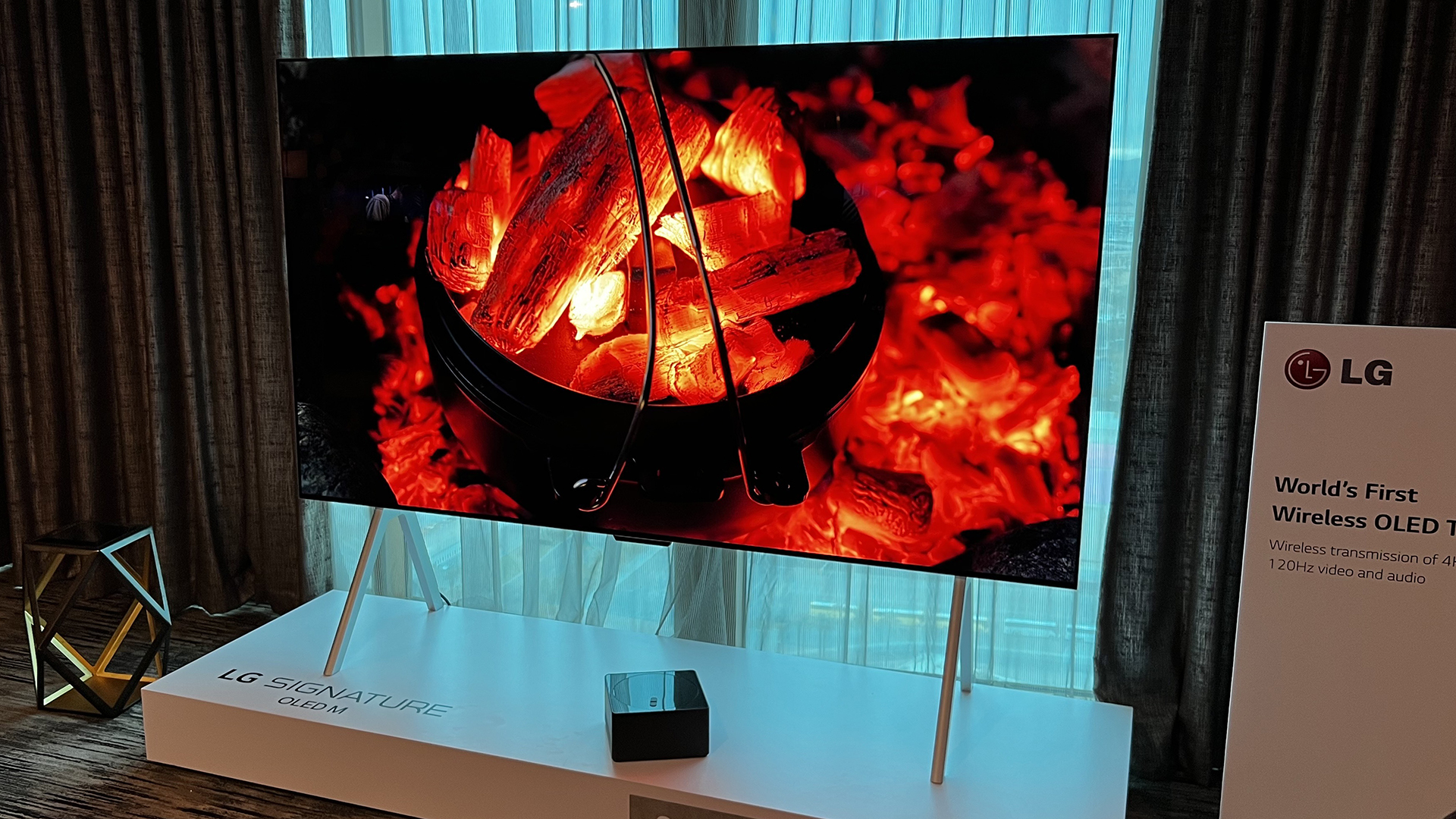
At CES 2023, LG announced its range of new OLED TVs for 2023 – including the fascinating new LG Signature OLED M3 model.
The LG M3 model doesn't have any HDMI ports. Well, not on the bit with the screen. It has a separate 'Zero Connect' box which is capable of beaming video in 4K HDR over to the screen, even at 120Hz – this the first time I've seen this in a commercial product (though 4K 60Hz wireless transmission has been around for a while).
The TV isn't totally wireless (it still needs power over a cable, naturally), but it means you can run a single cable to it, that channels near-invisibly through its legs, and put the TV wherever you want in the living room without a mess of boxes and cables nearby.
The image quality doesn't seem to have taken a hit at all in order to make this happen, as far as I could see, and all of the usual features that LG is known for are supported, including VRR for gaming, plus Dolby Vision HDR.
I saw demo footage played from a USB stick, as well as a Blu-ray player plugged into the Zero Connect box and playing clips from a movie.
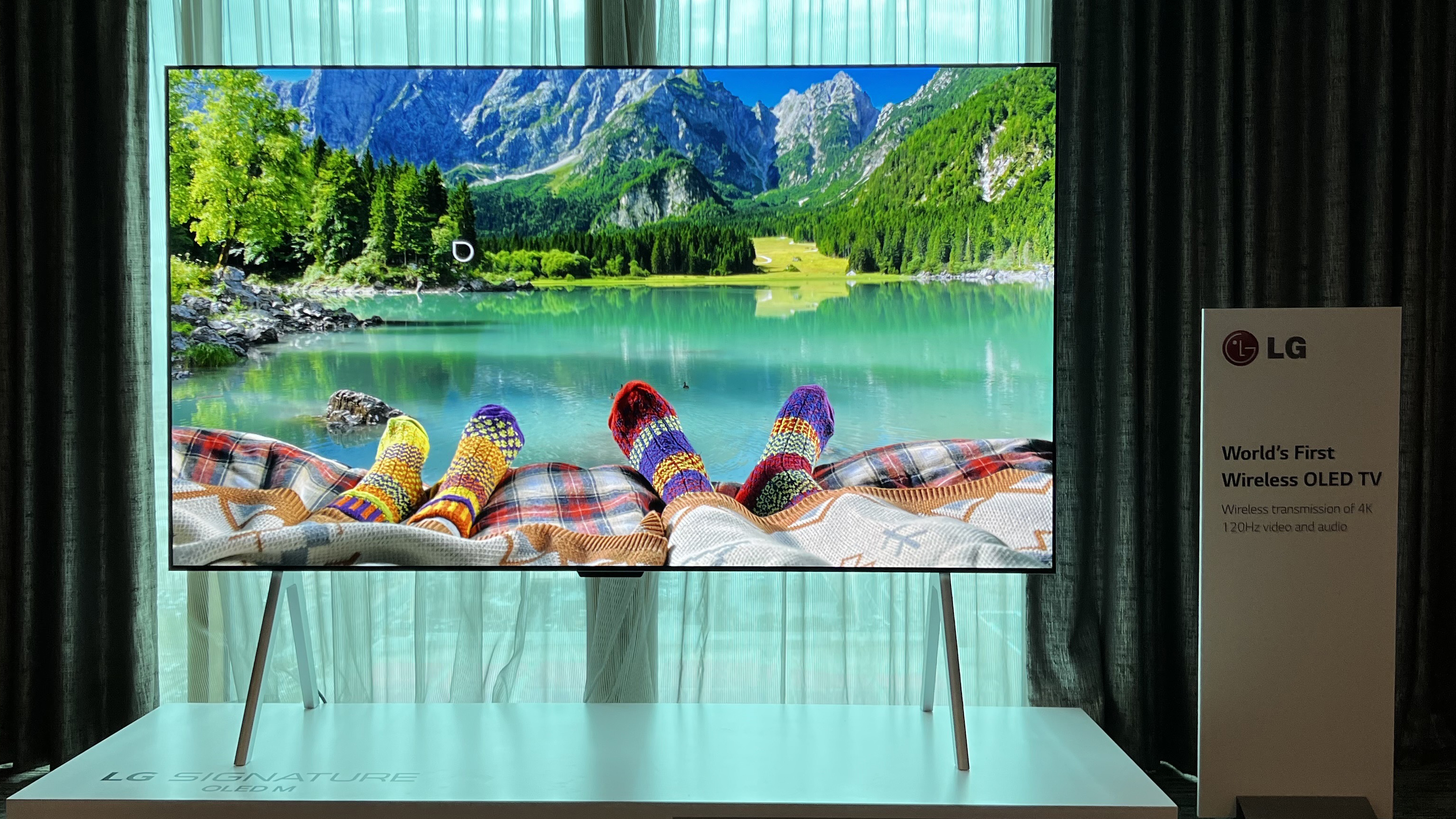
The M3 was shown alongside the new LG G3, LG C3 and LG Z3 8K TVs at a CES demo, and it delivers exactly the kind of rich colors and deep black tones you'd expect.
LG says it'll be available at 77-inch, 83-inch and 97-inch sizes – I saw the giant 97-inch version. It features the latest-generation Alpha 9 Gen 6 image processor, and the 77-inch version includes the new Brightness Booster Max tech with Light Control Architecture – as used on the LG G3 too. This means the 77-inch version would be the brightest model of the three, though I didn't seen it in person (but I did see the Z3 and G3 with the new brighter tech, and they look fantastic).
What's in the box?
So, the screen is basically the LG G3 with the ports removed and new wireless connection added. But what kind of connection?
It's a proprietary connectivity based on RF technology, but LG doesn't want to elaborate further (at least, not yet), because the final implementation is still to be decided – RF frequencies are regulated, so LG is still working with regulators on what the specs will be.
However, LG is happy to say that the connection is not based on Wi-Fi or any other kind of existing wireless video system, and that it's not only capable of 120Hz 4K, but manages this at a latency low-enough for gamers. It says the connection latency should be three times lower than using Wi-Fi 6, for example.
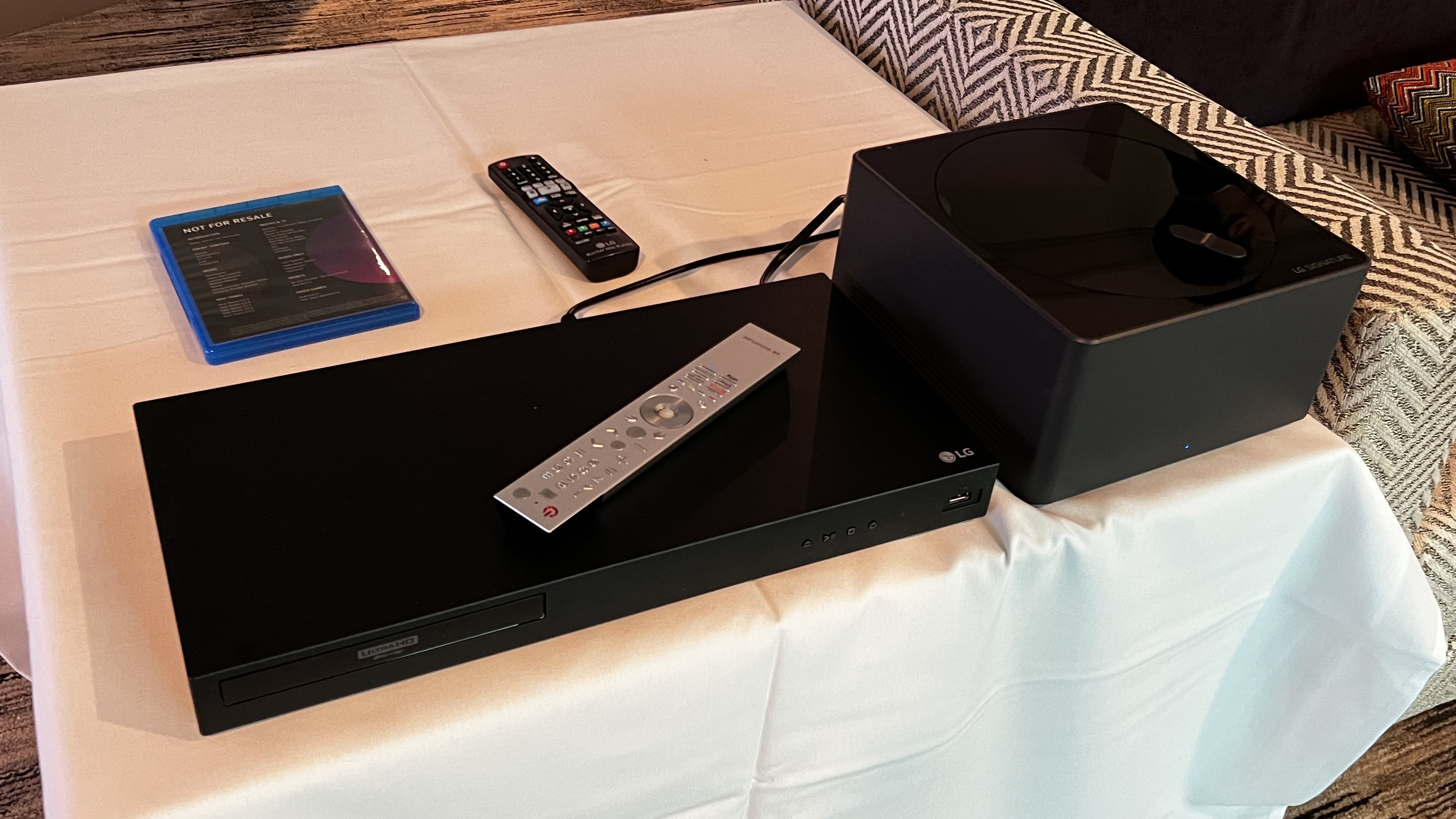
The Zero Connect box is pretty large (about two-thirds the size of a PS5), and has a big dial on top that you can turn. This is actually connected to the antenna, and the idea is to turn a pointer to face the TV, so that you can get the optimum signal (there's a signal strength indicator which you can activate on the TV to check, too).
(By the way, this is a good moment to talk about how funny it is that this thing is called the 'Zero Connect' box, considering that some Samsung TVs use a 'One Connect' box, which is separate box for processing and cables which uses, yes, one single cable. LG really seems to getting one over on its fellow Korean rival there.)
LG says you should place the box within 10 metres (32 feet) of the TV, with a clear line-of sight between the two – you shouldn't close it in a cabinet or similar. However, you shouldn't have any problems if the signal is temporarily blocked (by someone walking past, say) – the connection is constantly checking its potential connection paths, and if the signal drops, it'll try another angle.
So what are the catches?
The M3 is kind of dazzling – I've loved these kinds of products when I've covered them before – but three problems immediately jumped out at me as LG was explaining things. Well, two did – the third only became clear when I got curious and started poking around.
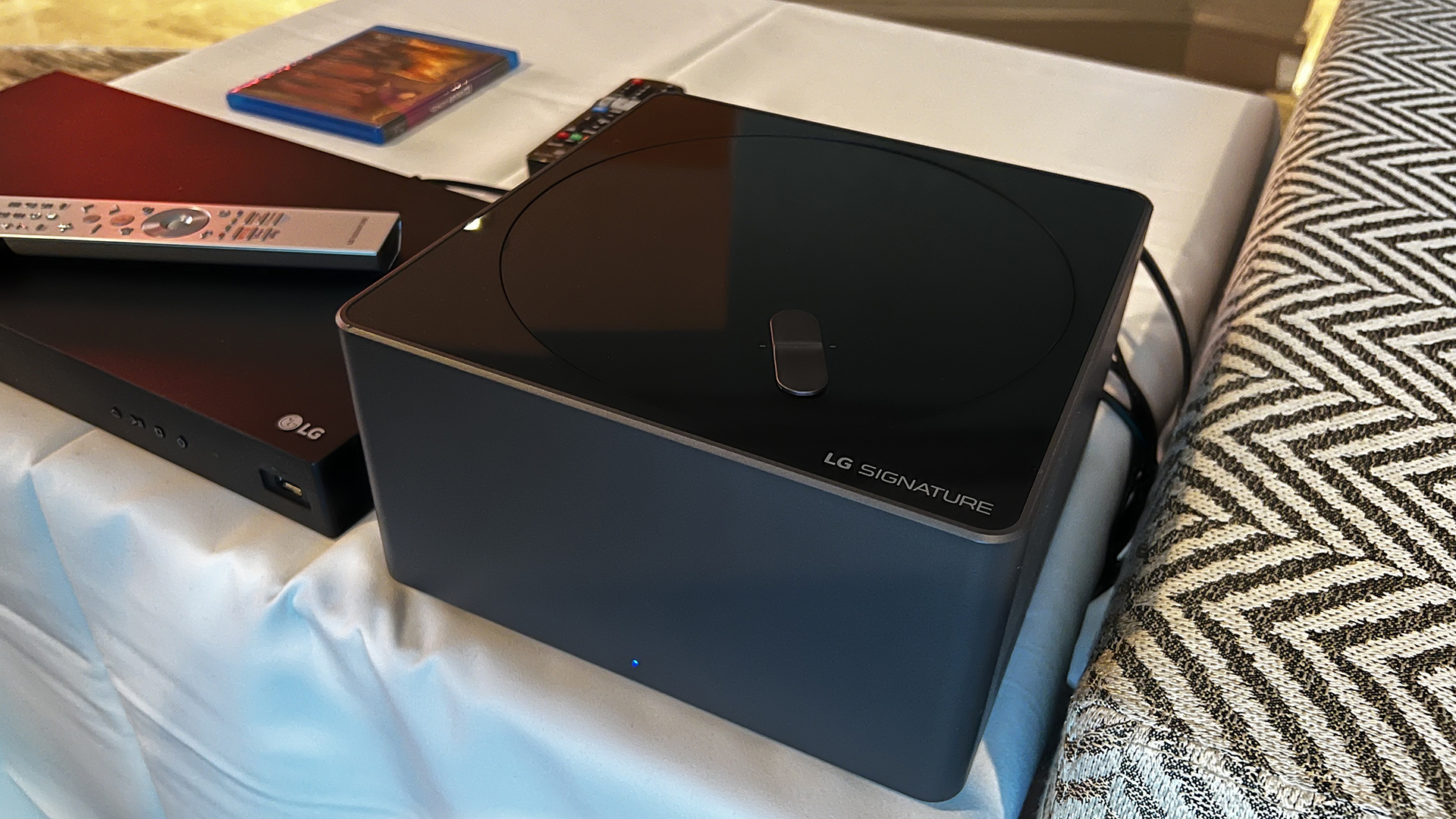
The first is the connections in the Zero Connect box: there are only three HDMI ports. The LG reps I spoke with weren't able to say why, but that's annoying – especially as anyone splashing out on a TV like this (pricing hasn't been revealed, but don't expect it to be cheap) will want a serious sound system too.
That sound system had better go through an AV receiver with plenty of HDMI ports, because otherwise you'll lose one of the three HDMI ports just to an HDMI ARC connection. No other high-end TV that I can think of has only three HDMI ports.
The other two problems are both to do with the design. The Zero Connect box is a black plastic cuboid. It is not pretty, and it only comes in a generic (and not especially premium-looking) matte black. This needs to come in different finishes to match different decor options, if it's supposed to sit on a shelf somewhere visibly.
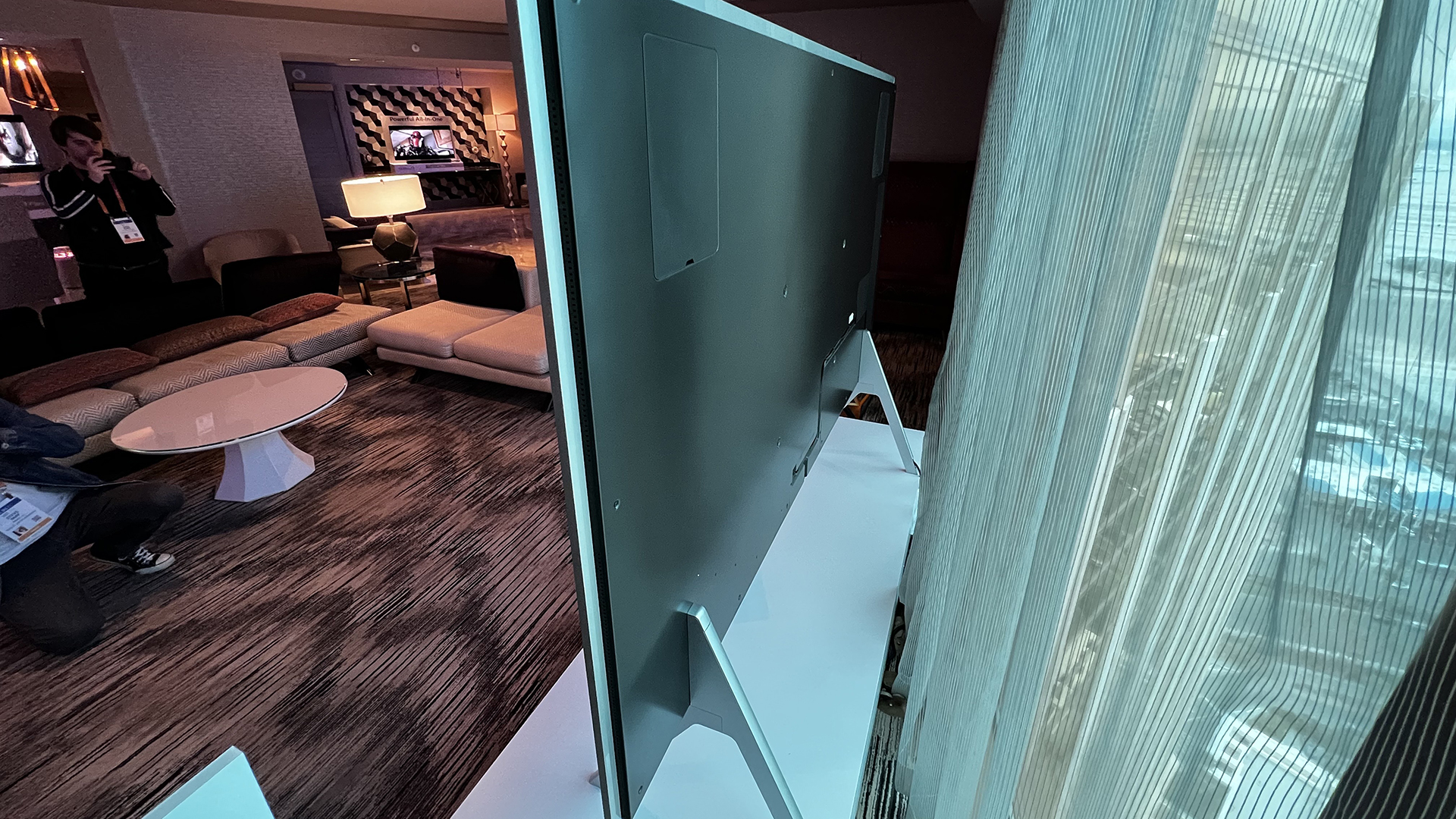
And finally, there's the back of the TV. The M3 is ideal to place in the middle of a room, rather than right at the edge (it can also be wall-mounted, if you want), and it has a fetching stand for this very purpose. Its design is very much like the genius of the LG Posé, which has textures and even a shelf on the back, so that it can function as a piece of furniture in your room, not simply a black rectangle you pressed against a wall.
So why is the back of the LG M3 just silver, with exposed fixtures and fittings? Its design is very, very close to that of the LG G3, but that TV is made for wall-mounting. This appears to be made for flexible positioning, including in places where people might see the back. It seems bizarre to me, but it won't be a problem for everyone, of course.
LG says the model I saw is effectively a finished design, so these issues seem unlikely to be addressed before launch.
The LG M3 is due out in the second half of 2024, and I'm still really excited by the overall idea of it – but these issues make me think that the second, follow-up version might be the one to really nail this concept.
Check out our CES 2023 hub for all the latest news from the show as it happens. We're covering all the big news and announcements, from 8K TVs and foldable displays to new phones, laptops, and smart home gadgets.
Get daily insight, inspiration and deals in your inbox
Sign up for breaking news, reviews, opinion, top tech deals, and more.

Matt is TechRadar's Managing Editor for Entertainment, meaning he's in charge of persuading our team of writers and reviewers to watch the latest TV shows and movies on gorgeous TVs and listen to fantastic speakers and headphones. It's a tough task, as you can imagine. Matt has over a decade of experience in tech publishing, and previously ran the TV & audio coverage for our colleagues at T3.com, and before that he edited T3 magazine. During his career, he's also contributed to places as varied as Creative Bloq, PC Gamer, PetsRadar, MacLife, and Edge. TV and movie nerdism is his speciality, and he goes to the cinema three times a week. He's always happy to explain the virtues of Dolby Vision over a drink, but he might need to use props, like he's explaining the offside rule.